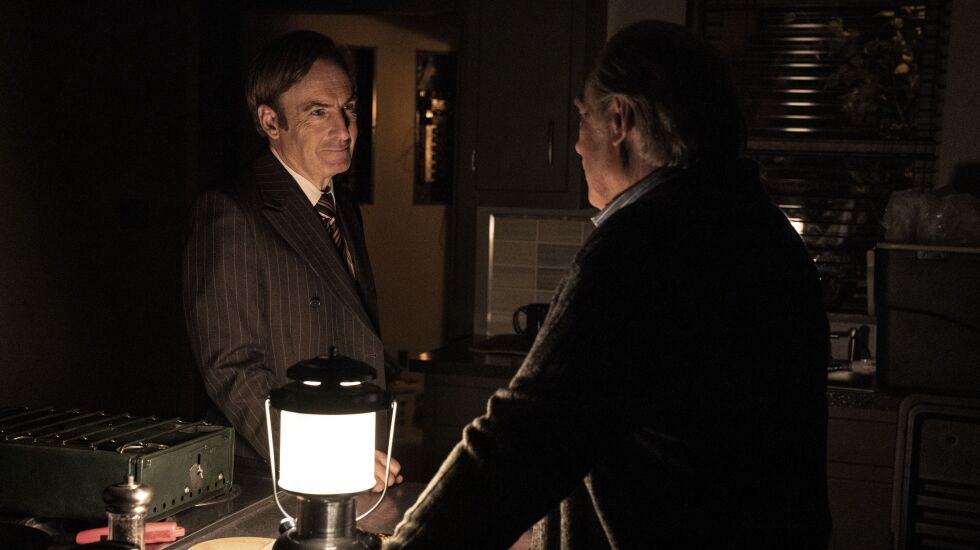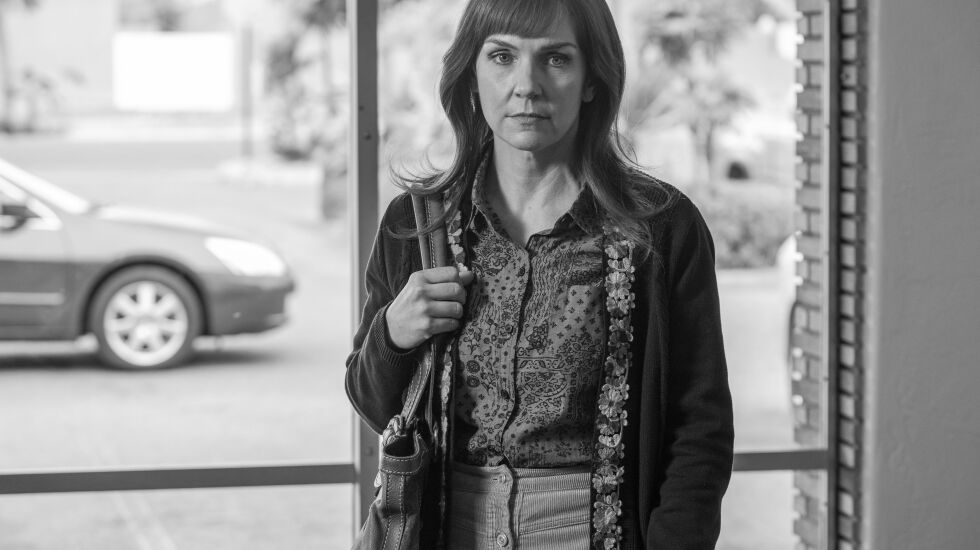
After Bryan Cranston’s Walter White exited this world after the Monday night series finale of “Breaking Bad” and we heard the sounds of Badfinger’s “Baby Blue” on the soundtrack, if you asked me which character from Heisneberg’s world would be best-suited for a spin-off series, I probably would have voted for Aaron Paul’s Jesse Pinkman or Jonathan Banks’ Mike Ehrmantraut or Giancarlo Esposito’s Gustavo Fring.
Bob Odenkirk’s Saul Goodman? Wouldn’t have been my first or even second choice. To be sure, Odenkirk had created a memorably slippery character who provided invaluable dark comic relief and was a catalyst for any number of major plot twists and turns — but he seemed a bit one-dimensional to carry a series.
Sometimes it’s great to be wrong.
Thanks to showrunner Vince Gilligan, an enormously gifted team of writers and directors, one of the best ensemble casts in recent memory and Odenkirk’s richly layered and electric work as Jimmy McGill/Saul Goodman/Gene Takovic, “Better Call Saul” evolved into arguably the greatest spin-off series in the history of television, a near-equal to “Breaking Bad.” Saul turned out to be as complex and Machiavellian as Walter White himself. (And in a way, Jesse, Mike and Gustavo all DID have their own-spinoff storylines: Jesse in the feature-length “El Camino,” and Mike and Gustavo as major players in “Better Call Saul.” We had our Blue Bell mint chocolate ice cream and ate it, too.)

At times it was a heavy lift to keep track of the timeline in “Better Call Saul,” as we spent most of the series in the early 2000s, before the events of “Breaking Bad,” but we often jumped forward to the early 2010s, especially in the final season. (Even Odenkirk seemed to lose track of the timeline when on a recent episode of the after-show “Talking Saul,” he said Saul hadn’t seen Kim for a year and a half and had to be corrected and told it was more like six years.)
Spoiler alerts!
The series finale was set mostly in the Gene timeline and filmed in gorgeous, noirish black-and-white, as Jimmy’s past finally caught up with him and he was arrested in a garbage dumpster in Omaha. (Not the first time Jimmy found himself in a dumpster.) As Jimmy squares off against federal law enforcement officials and begins negotiating in his typically slick manner, Betsy Brandt’s Marie Schrader returns with a fierce and triumphant splash, testifying as to the character of her husband Hank, who along with his partner, Steve Gomez, was murdered in the desert. (“They tell me they found you in a garbage dumpster,” says Marie. “Well, that makes sense.”)
We were also treated to a trio of brilliant flashback sequences: first with Saul and Mike in the desert, then with Saul and Walter White hiding out beneath Ed Galbraith’s vacuum shop, and finally with Saul and his brother Chuck (the magnificent Michael McKean) in Chuck’s house. Saul asks Mike where he would go if he had a time machine and poses the same question to Walter. (When Saul says his big regret was injuring his knee in a “slip and fall” scam outside Marshall Field’s when he was 22, Walt says with disdain, “So you were always like this.”) In both cases, Saul is talking more about regrets than time travel. Later, in Chuck’s house, Chuck tells his brother, “If you don’t like where you’re headed, there’s no shame in going back and changing your path.” And we catch a glimpse of the book Chuck is reading: “The Time Machine” by H.G. Wells.

The final episode, titled “Saul Gone,” contains a number of such callbacks and Easter eggs, e.g., when Saul is extradited to New Mexico, he’s on a Wayfarer flight — and it was a Wayfarer jet that collided with a charter flight in “Breaking Bad” and resulted in the deaths of 167 passengers, due to a chain of events initiated by one Walter White.
After negotiating an unbelievably favorable deal that will have him out of prison in just seven years, Saul Goodman acts as his own counsel at the official sentencing hearing, reclaims the name Jimmy McGill and incriminates himself in a number of offenses, in order to save Rhea Seehorn’s Kim from possible prosecution and to demonstrate to Kim he still has a soul. He can’t make up for all the damage he’s done, but he can do this one thing. I was reminded of that final scene in “Breaking Bad” and the use of “Baby Blue,” which was a nod to Walter White’s signature blue meth but also contains this almost too on-the-nose line: “Guess I got what I deserved…”
So many of characters in the “Breaking Bad” universe got what they deserved, from Walter to Gus, from Mike to Lydia, from Todd Alquist to his uncle Jack Welker, not to mention all those Salamancas and the notorious Eladio Varga. But there were so many others who were innocent victims: those airline passengers; the 10 Mexican passengers in the back of a truck; the aforementioned Hank and Steve; Howard Hamlin; Charles McGill; Jesse’s girlfriends Jane Margolis and Andrea Cantillo. Saul Goodman wasn’t complicit in all those deaths, but as he states in his sentencing hearing, “If he hadn’t walked into my office...Walter White would have been dead or behind bars within a month, and Agent Schrader and Agent Gomez and a whole lot of other people would still be alive.”
After a final moment between Kim and Jimmy that harkens back to the premiere episode of of “Better Call Saul,” Kim takes one last look at Jimmy, who has been given an 86-year sentence and will never breathe free air again. It’s a brutal and devastating curtain closer, but the look on Jimmy’s face tells us he believes he got what he deserved.




!["[T]he First and Fifth Amendments Require ICE to Provide Information About the Whereabouts of a Detained Person"](https://images.inkl.com/s3/publisher/cover/212/reason-cover.png?w=600)


